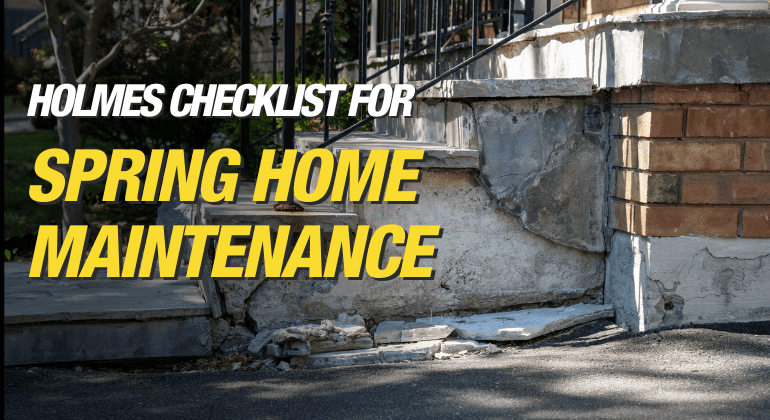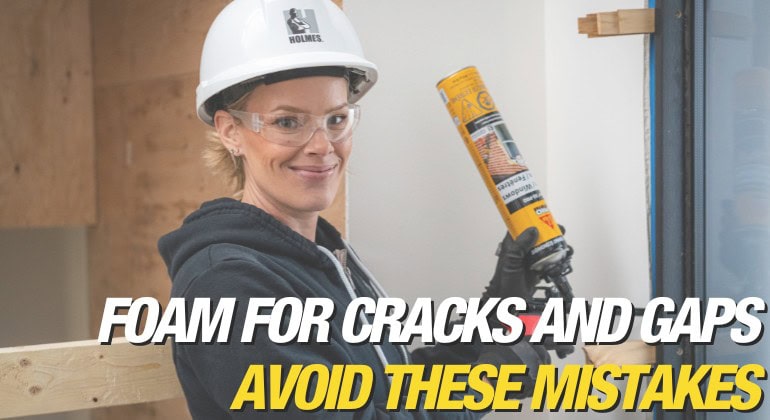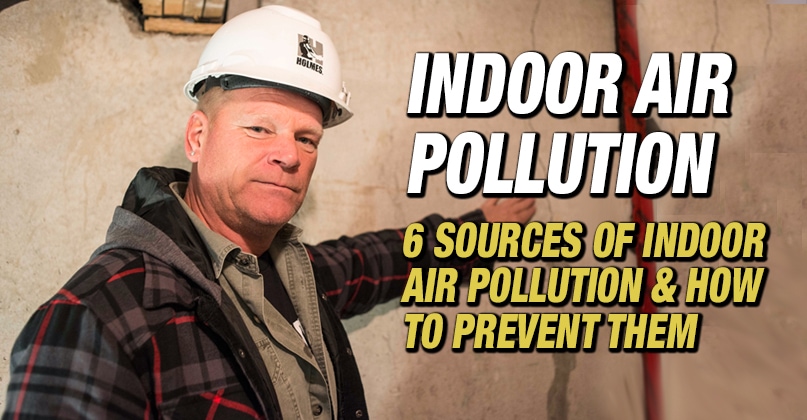When it’s time to replace your HVAC system, you have several options, each with its own benefits. Choosing the right HVAC system depends on your home’s size, climate, energy needs,...

Spring Home Maintenance Checklist
By Mike Holmes
Mike’s Advice / Home Safety & Maintenance
Wednesday, January 31st, 2024 @ 12:00pm
Spring is that time of year when we give our homes the once over and assess any damage after the winter months, figure out what needs to be done, and schedule the work so our homes are in tip-top shape by the end of fall.
A lot of people set aside a whole weekend for spring cleaning. But what about maintenance checks for warmer weather? Use the spring home maintenance checklist below to get your home spring-ready.
Prepare your HVAC system for spring
Getting your HVAC systems ready for warmer weather is very important. It is important for your indoor air quality. By cleaning your system and maintaining it regularly, you are guaranteed greater efficiency and a healthier indoor environment.
A professional HVAC technician is key to the longevity of your HVAC system.
- Replace furnace filter. I recommend changing your filter every 90 days. If the air filter is dirty, your indoor air is dirty. A dirty air filter also makes it hard for your AC to do it’s job.
- Install new batteries in smoke alarms & carbon monoxide detectors. This should be done annually.
- Test & dust all detectors. This should be done every season.
- Remove debris and gunk from the top and exterior parts of your outdoor air conditioning units. It’s likely that over the winter, trash, foliage and debris has found its way around the unit.
- Schedule air conditioning inspection
- Consider professional duct sealing. It can improve the energy efficiency of your home and lower your bills.
- Adjust your thermostat to welcome the warmer weather. If you have a smart thermostat, you’ll enjoy energy savings through scheduling.
Check out your sump pump. A sump pump needs to be regularly monitored to make sure it will do it’s job when needed. Clear away debris, it could cause a blockage.
RELATED: Do You Know what’s in Your Furnace Room?
Kitchen and Bathroom
Making sure your bathroom and kitchen ventilation systems are working is important for your indoor air quality. This is specially important in newer homes that are airtight.
- Inspect bathroom & kitchen caulking—recaulk as needed. Watch this easy video for how to recaulk around your bathtub.
- Test kitchen & bathroom exhaust fans. Your kitchen fan is responsible for taking away the moisture that cooking generates. Your bathroom exhaust fan takes away the moisture created from taking a shower. If the warm, moist air isn’t vented properly, it will lead to serious issues like mold. More on bathroom and kitchen ventilation in this article.
- Clean kitchen exhaust hood & filter
- Vacuum refrigerator coils
- Check fire extinguishers—at least once a month
Home Exterior & Foundation
I always say fix from the outside in. If you have problems with your building envelope, it can lead to issues such as mold, rot and indoor air quality problems. If you are thinking of taking on a renovation this year, assess how much you need to set aside for necessary repairs first. A new bathroom vanity can wait. A leaky roof can not.
If you find that the eavestroughs are clogged, water will back up under the shingles and cause damage to the roof deck. This is a DIY job as long as you take the necessary safety precautions. Read about more outdoor home projects you can take on yourself.
Clean & seal deck—if needed.
You can clean your deck with a mild soap and a garden hose. Stick your nose to the window when it’s raining and watch it hit your deck. If the water beads and pools for long periods of time, you still have protection, no beads means that it’s time for a maintenance coat. For more on deck maintenance, read this article.
- Check foundation for cracks & leaks. You want to make sure your home’s #1 enemy (water) is not entering your home through foundation cracks. If you can squeeze a dime in the foundation crack, it’s time to bring in a specialist. Read my National Post article about foundation cracks.
- Check exterior paint & touch up as needed.
RELATED: Exterior Painting Tips - Check siding & masonry for damage & schedule repairs
- Check roof for damage & schedule re-roofing if needed. Your roof is the defence system for your home. I recommend having a home inspector come in every year to take a look at your roof. If you need to replace your roof this year and are looking into Asphalt Shingles, read this article for more info.
Pest Intrusion and Your Windows and Doors
- Remove storm windows & install screens
- Repair/replace damaged window screens
- Inspect caulking around windows—if cracking recaulk
- Check attic for leaks, mold, moisture intrusion, fire hazards & critters
RELATED: How to Test and How to Remove Mold
Home Inspection
- Schedule a maintenance and/or energy efficiency inspection
- If your deck looks like it’s in questionable condition, schedule a deck inspection through a reputable home inspection company
- Schedule annual septic tank inspection
- Schedule annual dryer exhaust cleaning & check up
- Check water heater for leaks—schedule inspection if older than 5 years
There are some repair jobs you can tackle on your own that have an impact on the performance of your home. Read about the 5 DIY repair jobs you should do on your own.
Here are your other seasonal home maintenance guides:
Summer Home Maintenance
Fall Home Maintenance
Winter Home Maintenance
READ NEXT:









